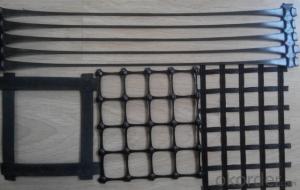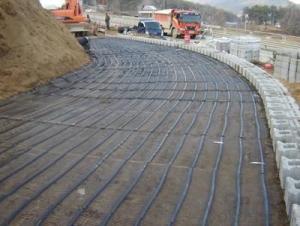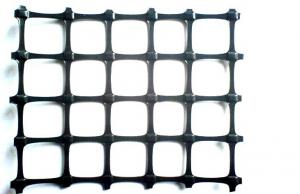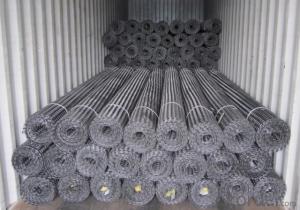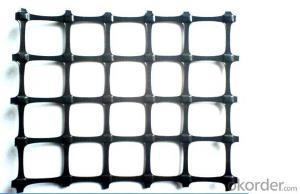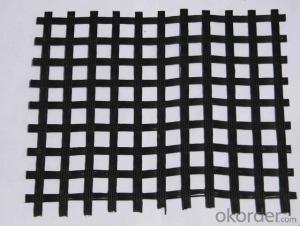HDPE Geogrid with CE Certificate for Construction
- Loading Port:
- Shanghai
- Payment Terms:
- TT OR LC
- Min Order Qty:
- 85800 m²
- Supply Capability:
- 1000000 m²/month
OKorder Service Pledge
OKorder Financial Service
You Might Also Like
The Description of HDPE Geogrid
HDPE Geogrid is a kind of new favorable earthwork base material to strengthen the road surface and roadbed. This product is made by weaving and covering fiberglass filament. It is featured by high vertical and horizontal tensile strength, low unit extension, high flexibility, and favorable high and low temperature resistance. The products after surface covering own the favorable property of alkali resistance and aging resistance.
The details of HDPE geogrid
| Type: | Geogrid | Material: | hdpe geogrid | Place of Origin: | China (Mainland) |
| Certificates: | CE,ISO | Color : | White & Black | Width : | 1m--6m |
| Length | 50-200m | Mesh Size: | 10-40mm | Tensile Strength | 30KN-300KN |
| Area Weight | 130-900g/sm | Package | PP bags or PE film | Approximate mesh size | 12.7*12.7 25*25 40*40 |
Packaging & Delivery
| Packaging Details | PP bags or PE film. Or Packed as customers' requests; |
| Delivery Detail | 10-20days after see the payment. |


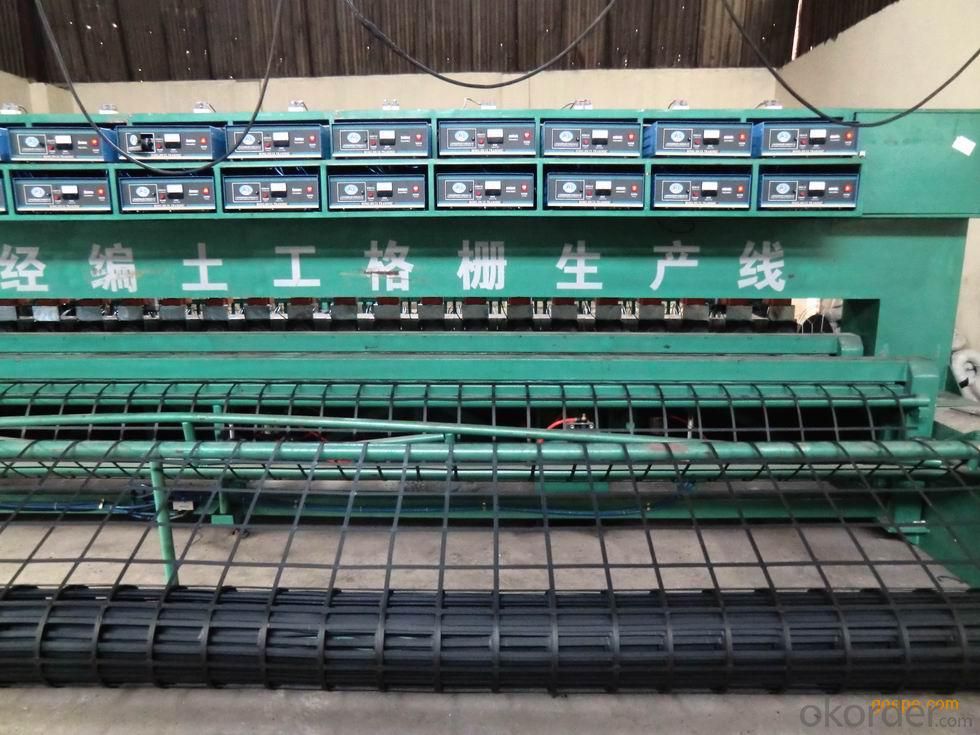
Remarks: we are very large fortune 500 enterprise with more than 20branches in worldwide, and have almost ten years export experience in geosynthetic field. We have kunlun bank account and have many Iran geosynthetics customers.So if any question or support, please just feel free to contact me at any time.
- Q:Are geogrids resistant to biodegradation?
- Yes, geogrids are typically resistant to biodegradation. Geogrids are made from synthetic materials such as polyester or polypropylene, which are designed to be durable and resistant to decay caused by biological organisms or environmental factors. This resistance to biodegradation makes geogrids suitable for long-term applications in civil engineering, soil stabilization, and erosion control.
- Q:How do geogrids improve the stability of shorelines?
- Geogrids improve the stability of shorelines by providing reinforcement and preventing soil erosion. They are typically installed beneath the surface of the shoreline, creating a strong and stable foundation. Geogrids help distribute the load of the soil and wave forces, reducing the risk of slope failure or collapse. Additionally, they enhance the soil's resistance to erosion caused by waves, currents, or wind, ultimately preserving the shoreline's integrity and preventing further degradation.
- Q:How are geogrids used in road construction?
- Geogrids are used in road construction to improve the stability and strength of the road. They are placed between different layers of the road, such as the subgrade and the base course, to distribute the load and prevent the movement of soil particles. This helps to increase the road's durability, reduce deformation, and enhance its overall performance.
- Q:How do geogrids reduce the amount of fill required for construction?
- Geogrids reduce the amount of fill required for construction by providing reinforcement and stabilization to the soil, allowing for the use of less fill material. They distribute the load more evenly, improving the soil's strength and preventing excessive settlement, which ultimately reduces the amount of fill needed for a stable foundation.
- Q:What is the significance of each index
- Geosynthetics shall comply with the following requirements:One)The bearing layer should be smooth, paving should be straightened, smooth, close to the underlying layer, shall not distort, wrinkle. In the obliqueThe slope on shop, should maintain a certain degree of tightness.
- Q:Can geogrids be used in reinforcement of retaining walls?
- Yes, geogrids can be used in the reinforcement of retaining walls. Geogrids are commonly used to enhance the stability and strength of retaining walls by providing additional reinforcement. They help distribute the forces exerted by the soil and improve the overall performance and longevity of the retaining wall structure.
- Q:Are geogrids resistant to puncture?
- Yes, geogrids are generally resistant to puncture. They are designed to provide high tensile strength and durability, making them capable of withstanding puncture forces. However, the level of resistance may vary depending on the specific type and quality of the geogrid.
- Q:Are geogrids suitable for use in railway ballast reinforcement?
- Yes, geogrids are suitable for use in railway ballast reinforcement. Geogrids are designed to provide structural support and increase the stability of railway ballast. They help distribute loads and prevent lateral movement of the ballast, enhancing the overall performance and longevity of the railway track.
- Q:What are the differences between geogrids and geocells in terms of installation?
- Geogrids and geocells differ in terms of installation as geogrids are typically laid down on the ground and then covered with soil or aggregate material, while geocells are assembled and connected together to form a three-dimensional structure that is filled with soil or aggregate material. The installation of geogrids involves unrolling and securing the material to the ground, while geocells require interlocking the individual cells and securing them in place before filling.
- Q:What are the installation methods for geogrids?
- Geogrids can be installed using various methods such as direct placement, mechanical connection, and soil reinforcement techniques. Direct placement involves laying the geogrid directly on the subgrade or soil surface. Mechanical connection refers to connecting the geogrid to existing structures or other geosynthetic materials using fasteners or anchors. Soil reinforcement methods involve embedding the geogrid within the soil to enhance its tensile strength and stability. The choice of installation method depends on the specific project requirements and the desired outcome.
1. Manufacturer Overview |
|
|---|---|
| Location | |
| Year Established | |
| Annual Output Value | |
| Main Markets | |
| Company Certifications | |
2. Manufacturer Certificates |
|
|---|---|
| a) Certification Name | |
| Range | |
| Reference | |
| Validity Period | |
3. Manufacturer Capability |
|
|---|---|
| a)Trade Capacity | |
| Nearest Port | |
| Export Percentage | |
| No.of Employees in Trade Department | |
| Language Spoken: | |
| b)Factory Information | |
| Factory Size: | |
| No. of Production Lines | |
| Contract Manufacturing | |
| Product Price Range | |
Send your message to us
HDPE Geogrid with CE Certificate for Construction
- Loading Port:
- Shanghai
- Payment Terms:
- TT OR LC
- Min Order Qty:
- 85800 m²
- Supply Capability:
- 1000000 m²/month
OKorder Service Pledge
OKorder Financial Service
Similar products
New products
Hot products
Hot Searches
Related keywords

